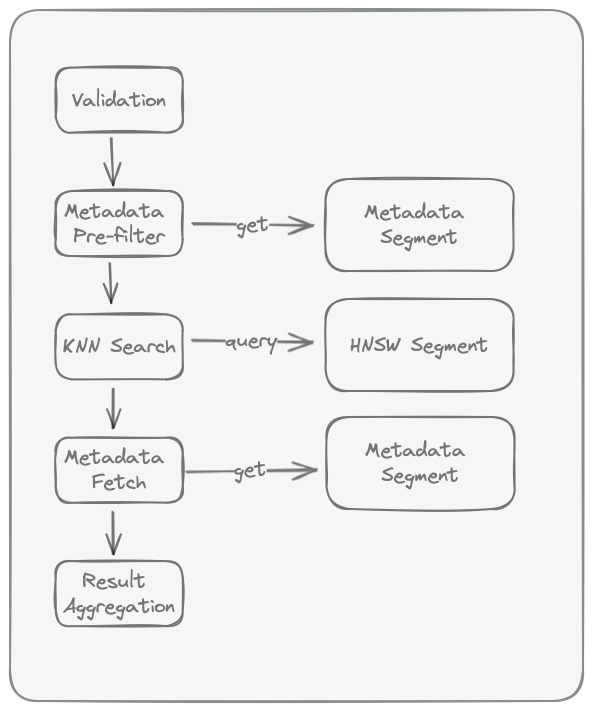Chroma Queries¶
This document attempts to capture how Chroma performs queries.
Basic concepts¶
Chroma uses two types of indices (segments) which it queries over:
- Metadata Index - this is stored in the
chroma.sqlite3and queried with SQL. Chroma stores metadata for all collections in this index. - Vector Index - this is the
HNSWindex stored under the UUID-named dirs under chroma persistent dir (or in memory for EphemeralClient). One index per collection.
Metadata Index¶
The metadata index consists of two tables:
embeddings- this is one-to-one mapping with the vectors stored in your collectionsembedding_metadata- this is N+1 mapping to the vectors stored in your collections. WhereNrepresents the number of metadata fields per record and can vary for records. There is at least one entry in theembedding_metadatatable per embedding which represents the document.
Query Pipeline¶
The query pipeline in Chroma:
- Validation - the query is validated
- Metadata pre-filter - Chroma plans a SQL query to select IDs to pass to KNN search. This step is skipped if
whereorwhere_documentare not provided. - KNN search in HNSW index - Similarity search with based on the embedded user query(ies). If metadata pre-filter
returned any IDs to search on, only those IDs are searched. The KNN search will also return actual vectors should
includedcontainembeddings. - Post-search query to fetch metadata - Fetch metadata for the IDs returned from the KNN search.
- Result aggregation - Aggregate the results from the metadata and the KNN search and ensure all
includedfields are populated.
Query Pipeline?
Why is it called a pipeline? Because each step in the query process depends on its predecessor's output.

Validation¶
The following validations are performed:
- Validate
whereif present - Validate
where_documentif present - Ensure collection exists
- Validate query embeddings dimensions match that of the collection
Metadata Pre-Filter¶
TBD
KNN Search in HNSW Index¶
TBD
Post-Search Query to Fetch Metadata¶
TBD
Result Aggregation¶
Result aggregation makes sure that results from the metadata fetch and the KNN search are fused together into the final result set.